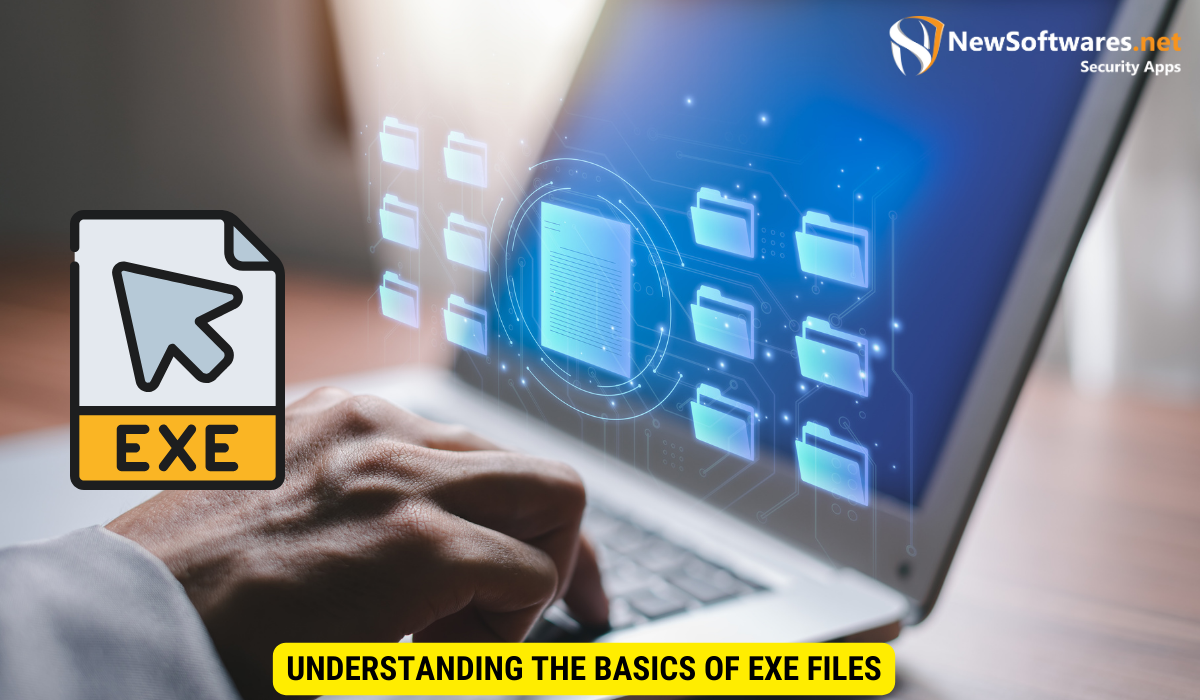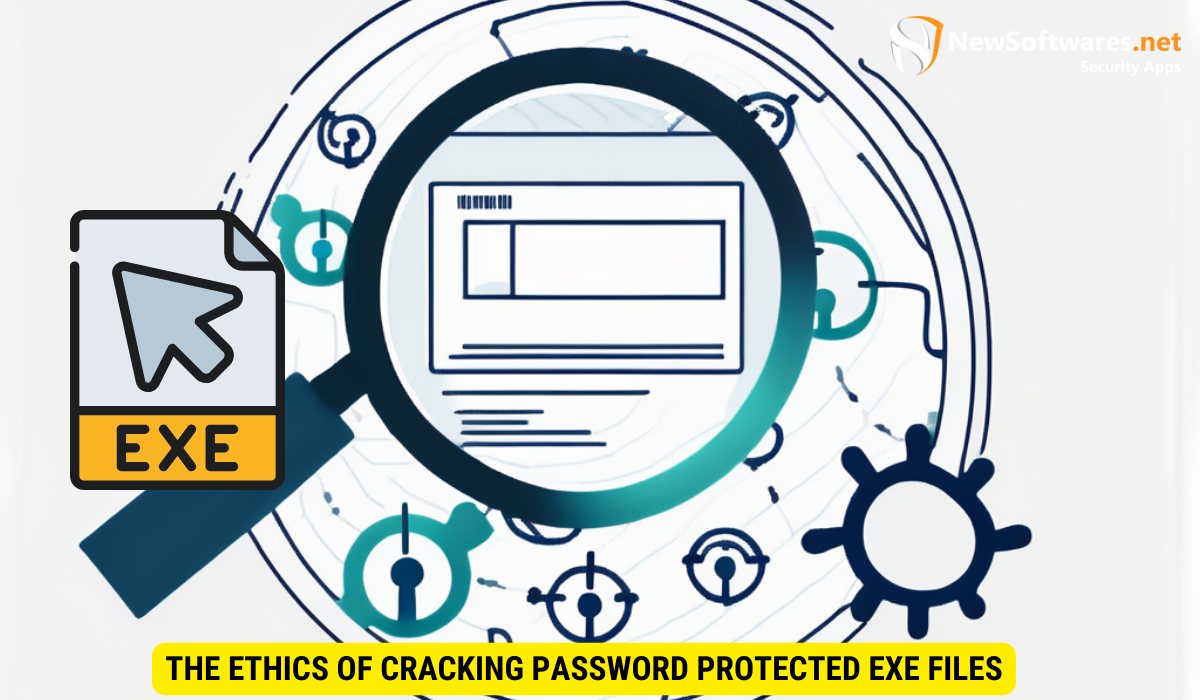Cracking password-protected EXE files involves understanding their encryption and employing techniques like brute force or dictionary attacks with caution and legality.
In the world of cybersecurity, understanding the intricacies of password protected EXE files is crucial. These executable files play a vital role in software functionality, but cracking their password protection can be a challenging task. Together, we will delve into the basics of EXE files, the ethics surrounding their cracking, the techniques employed, and the tools used in the process. So, let’s embark on this journey to decipher security and uncover the secrets of cracking password protected EXE files.
Understanding the Basics of EXE Files

Before we explore the realm of cracking password protected EXE files, it is essential to grasp the fundamentals of what an EXE file actually is.
An EXE file, short for executable, is a file format that contains instructions for a computer to execute a specific program or software. It is a binary file that enables software applications to run on various operating systems, such as Windows.
When delving into the intricate world of EXE files, it is crucial to understand that these files are compiled binaries, meaning they are not human-readable like source code. Instead, they consist of machine code that is directly executable by the computer’s processor, allowing for the seamless operation of software applications.
What is an EXE File?
An EXE file, short for executable, is a file format that contains instructions for a computer to execute a specific program or software. It is a binary file that enables software applications to run on various operating systems, such as Windows.
Furthermore, EXE files often incorporate various resources such as icons, images, and dynamic link libraries (DLLs) that contribute to the overall functionality and user experience of the software. These resources are essential for the proper execution and visual representation of the program.
The Role of EXE Files in Software
EXE files form the backbone of software, encapsulating all the necessary code and data required for program execution. They are the gatekeepers that initiate the software’s functionality, serving as the intermediary between the user and the application.
Moreover, EXE files can interact with the operating system’s kernel and other system resources, enabling the software to perform tasks such as file operations, network communication, and hardware interactions. This deep integration with the underlying system architecture highlights the critical role that EXE files play in the seamless operation of software applications.
How Password Protection Works in EXE Files
Password protection in EXE files adds an extra layer of security, restricting unauthorized access to the software. When an EXE file is password protected, it requires the correct password to be entered before the program can be executed. This mechanism helps safeguard sensitive information stored within the software.
Additionally, some advanced techniques involve encrypting the contents of the EXE file to prevent unauthorized tampering or reverse engineering. By employing encryption algorithms and secure hashing mechanisms, developers can enhance the security of their software and protect it from malicious attacks aimed at compromising its integrity.
The Ethics of Cracking Password Protected EXE Files

As with any cybersecurity-related activity, cracking password protected EXE files raises ethical concerns. It is important to understand the legal implications and the ethical considerations surrounding this practice.
When delving into the realm of cracking password protected EXE files, it is crucial to recognize the intricate balance between security testing and potential ethical dilemmas. The act of bypassing security measures to access executable files without proper authorization can lead to a myriad of consequences, both legally and ethically.
Legal Implications and Cybersecurity Laws
The act of cracking password protected EXE files without proper authorization may be illegal in many jurisdictions. It is essential to adhere to the cybersecurity laws of the respective country or region to avoid any legal repercussions.
In the ever-evolving landscape of cybersecurity laws, the legality of cracking password protected EXE files remains a contentious issue. While some jurisdictions may view it as a violation of digital rights and intellectual property laws, others may consider it a necessary means of testing security measures.
Ethical Considerations in Cybersecurity
The ethical aspect of cracking EXE files revolves around the intent and motive behind the action. If cracking is done with malicious intent to exploit software vulnerabilities or steal sensitive information, it is unquestionably unethical. However, ethical hacking, often referred to as white-hat hacking, focuses on identifying vulnerabilities and enhancing cybersecurity measures in a responsible manner.
Furthermore, the ethical considerations extend beyond the immediate act of cracking password protected EXE files. It is essential to analyze the potential consequences of such actions on the broader cybersecurity ecosystem and the trust between users, developers, and security professionals.
Responsible Disclosure and Its Importance
Responsible disclosure is a crucial aspect of ethical hacking. When a vulnerability is discovered, it should be reported to the software developer or vendor, allowing them to patch the vulnerability and protect their users. Timely and responsible disclosure helps maintain the balance between exposing security flaws and minimizing the risk of exploitation.
By fostering a culture of responsible disclosure, ethical hackers play a pivotal role in strengthening cybersecurity defenses and promoting transparency within the digital landscape. Collaboration between security researchers and software developers is essential in mitigating potential risks and ensuring a more secure online environment for all stakeholders involved.
Techniques Used in Cracking EXE Files
Cracking password protected EXE files involves various techniques aimed at bypassing the password protection mechanism. Let’s explore some of the commonly employed techniques.
Cracking EXE files can be a complex and challenging task, requiring a deep understanding of encryption methods and password protection mechanisms. Hackers and cybersecurity enthusiasts often delve into the world of cracking to test their skills and knowledge in bypassing security measures.
Brute Force Attacks
One of the brute force attacks, an automated process of systematically trying all possible combinations of passwords until the correct one is found. This method works on the assumption that the password is weak or easily guessable.
Brute force attacks can be time-consuming and resource-intensive, especially when dealing with strong passwords that are not easily guessable. Hackers may use specialized software and powerful hardware to speed up the process and increase the chances of success.
Dictionary Attacks
A dictionary attack utilizes a predefined list of commonly used passwords or words to attempt to crack the password. This method is effective when the user has chosen a password that is present in the dictionary list.
Dictionary attacks are based on the premise that many users tend to use simple and common passwords that are easily found in standard wordlists. Hackers often customize their dictionaries with additional words and variations to improve the chances of cracking the password.
Rainbow Table Attacks
Rainbow table attacks involve the use of precomputed tables of encrypted passwords and their corresponding plaintext versions. These tables enable the attacker to quickly identify the password using a reverse lookup process, significantly reducing the time required to crack the password.
Rainbow table attacks are based on the concept of storing precomputed hashes of passwords, allowing for rapid comparison and retrieval of plaintext passwords. This method is particularly useful for cracking passwords that are not salted or have weak hashing algorithms.
Tools and Software Used in Cracking EXE Files
Several tools and software are available that aid in cracking password protected EXE files. It is important to note that these tools should only be used for legal and authorized purposes.
Overview of Popular Cracking Tools
Popular cracking tools, such as John the Ripper, Cain and Abel, and Hashcat, employ various techniques to crack EXE passwords. It is essential to understand the functionalities and limitations of these tools before utilizing them.
Understanding the Functionality of Cracking Software
Cracking software utilizes algorithms and methodologies to break the password protection of EXE files. It is imperative to have a deep understanding of how these tools function to effectively navigate through the cracking process.
Precautions When Using Cracking Tools
When using cracking tools, exercising caution is of utmost importance. Always ensure that you have the necessary legal authorization and follow the ethical guidelines prescribed for responsible hacking. Unauthorized use of cracking tools can have severe consequences and legal implications.
Key Takeaways
- EXE files are binary files that enable software execution on various operating systems.
- Password protection adds an extra layer of security to EXE files, requiring the correct password for execution.
- Cracking password protected EXE files without authorization can have legal and ethical implications.
- Techniques such as brute force attacks, dictionary attacks, and rainbow table attacks are commonly used in cracking EXE files.
- Cracking tools and software aid in bypassing password protection, but caution should be exercised while using them.
FAQs
Q: Is it legal to crack password protected EXE files?
A: Cracking password protected EXE files without proper authorization is often illegal and can lead to legal consequences.
Q: What are the ethical considerations in cracking EXE files?
A: Ethical considerations in cracking EXE files revolve around the intent, responsible disclosure, and adherence to cybersecurity laws.
Q: Are there any precautions to take when using cracking tools?
A: Always ensure that you have the necessary legal authorization to use cracking tools and follow the ethical guidelines prescribed for responsible hacking.
Q: Can cracking EXE files contribute to enhancing software security?
A: Yes, responsible cracking with proper disclosure of vulnerabilities can help software developers improve their security measures and protect users from potential threats.
Q: How does password protection work in EXE files?
A: Password protection in EXE files restricts unauthorized access by requiring the correct password to be entered before the program can be executed.
Deciphering the world of cracking password protected EXE files. Learn about the basics of EXE files, ethical considerations, cracking techniques, tools used, and precautions to take. Enhance your understanding of cybersecurity and responsible hacking.
Conclusion
Cracking password protected EXE files requires a deep understanding of their functionality, the ethical considerations involved, and the techniques and tools utilized in the process. By following the legal and ethical guidelines, one can responsibly explore the realm of cybersecurity and contribute to enhancing software security. Remember, responsible hacking is about making the digital world safer, not exploiting vulnerabilities.
